10 Google Flights Tips And Tricks For Best Deals
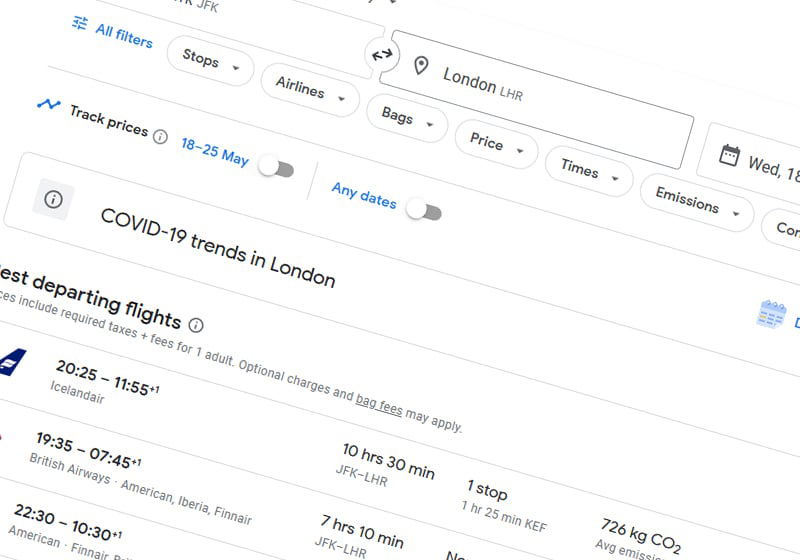
When it comes to finding good fares, Google Flights is a gem of a search engine. Sadly most people still do not know how to maximize it to its fullest potential, missing out on potential deals that could save you quite a few bucks. In this article, we will run through the basics and share some tips and tricks to make the most of your flight searching experience.
If you’re looking for a specific flight between destination A and B, the search allows you to put in the destinations and dates, and will give you the respective options. This is what most people do, but there are quite a few filters that can be manipulated if you’re hunting for a bargain or a comfortable flight. Let’s start off with a theoretical flight from Miami to London. Like most search engines, you can enter your trip type (one way, round trip or multi-city), the number of passengers flying and fare class. At this point, keep in mind that if you search for Economy fares, some results may show airlines offering Basic Economy flights.

In This Post
Find Cheapest Flights by Pricing Calendar And Date Grid On Google Flights
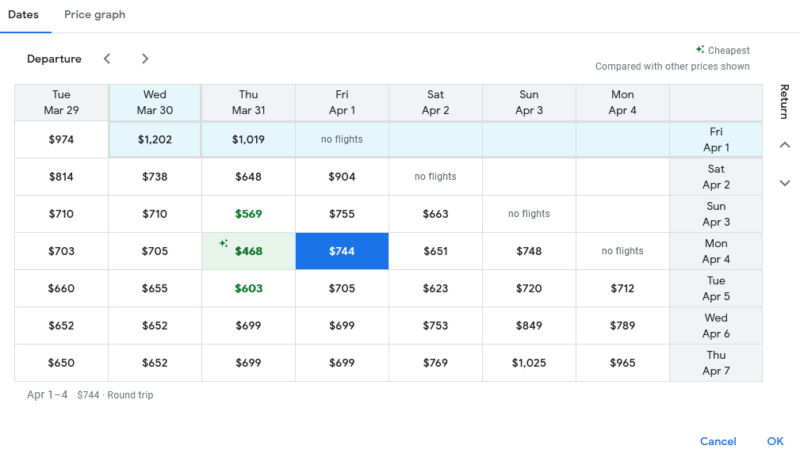
If you’re price-conscious and have a flexible schedule, enter the dates and click on the date box to find the cheapest fares by days. With the calendar view, you have the option to extend or shrink your travel period by trial and error, but the Date Grid option just below the date boxes better presents cheapest flights in a matrix format. You can easily scroll back and forth to see which combination of days works out to be the cheapest, and there is even a graphical presentation in the second tab to visualize the price differences. I prefer the drop down calendar as I can play with starting dates and then find prices from then on.
Set Up Fare Alerts and Monitor Price Trends
Google Flights can show you trending fare prices for your selected route, indicating whether it’s too expensive or even going at a bargain. You can even set up alerts to email you about significant price drops or increases for a specific time period, or just have Google alert you when the algorithm finds cheap fares for your planned city pairing. The “Track Prices” options are just below the location entry fields.
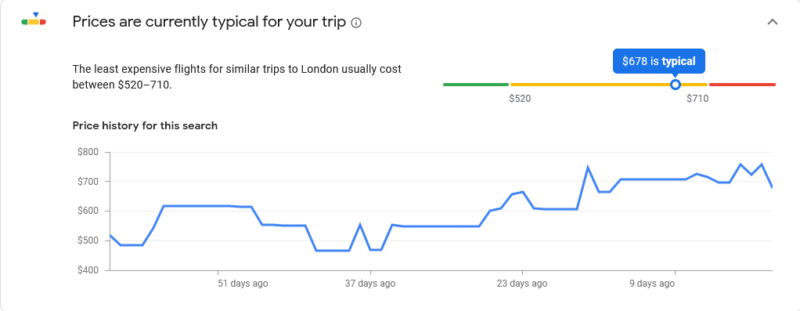
Search By City/Location Rather Than Airport (Or Multiple Airports)
If you’re flying between two major cities, chances are there are multiple airports serving that area. Instinctively you might think to fly out of the most popular airport, but other smaller hubs may prove to be more price friendly. For instance, it might be cheaper to fly out of LaGuardia on Spirit rather than American out of JFK. If you were really counting pennies and wanted to head south, you could take a train ride to New Haven and fly to Florida with Avelo. In the image below, the cheapest option to London is to Heathrow via Arlanda in Sweden, but if your final destination is closer to London Gatwick, there are other options at slightly higher prices.
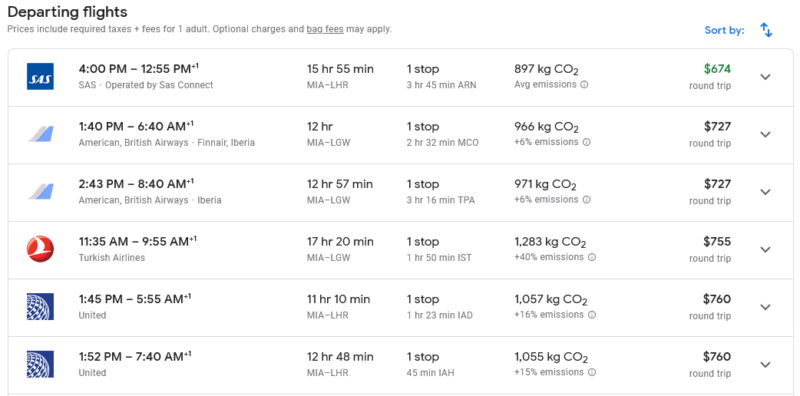
If you prefer to refine your results to a limited number of airports, in the “Where To” field, you can enter multiple airport codes, airport names or city names separated by commas. For instance, if I want to fly into New York/Newark area, I can specify JFK, LGA, EWR in the search. The same can be done for departing airports if you’re will to commute by an alternate means to save some money. For instance, I can leave the south Florida are via MIA, FLL to search either Miami International or Ft. Lauderdale International.
Adding Stops To Potentially Reduce Ticket Price
If your trip isn’t time sensitive, adding a stop MAY significantly cut your ticket price. For instance, non-stop flights between New York and London are quite pricey, especially in business or first class, but adding a stop via Portugal or Istanbul could significantly reduce your fare, potentially by more than one thousand dollars depending on what class you book. Usually I try to stick with one stop unless a two-stop ticket works out to be a bottom of the barrel fare.
Travel Via Preferred Airline Or Alliance
If you’re chasing after points or miles, or prefer to fly with a particular airline, the “Airlines” filter allow you to either filter by the airline brand or alliance. It may not result in the best savings, but it could work out well if loyalty is more important than the cheapest fare.
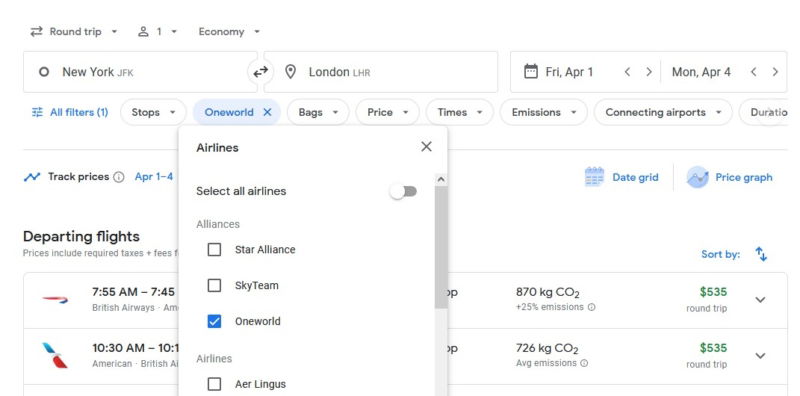
Other Google Flights Filters To Play With
Besides some of the major filters, there are other smaller options to look for more convenient flights.
- Bags – Some airlines charge separately for checked luggage (and sometimes carry-on bags). The bags filter simply updates the price to include the bag fees so you can get a better idea what your final price will look like.
- Price – Pretty self-explanatory. You can adjust the slider to set a certain budget.
- Times – If time is your top priority, you can search for departures and/or arrivals by time of day. If you prefer leaving in the evening or morning, simply adjust the slider to see qualifying flights. Usually I leave this untouched to avoid missing out on other deals.
- Emissions – Recently introduced, the emissions option can filter flights by estimated CO2 output. Newer aircraft types like the 737 MAX, Airbus A350, and other newer variants have lower output compared to older aircraft types.
- Connecting Airports – Can be useful to filter out connecting countries you may not be able to travel to (e.g. visa restrictions).
Try Booking Separate One Way Tickets
This is not Google Flights specific, but it does make it pretty easy to mix and match one way combinations that could work out potentially cheaper overall. This isn’t always guaranteed but I’ve found a few deals between high-priced cities that worked out better with one-way tickets either way the same airline or different airlines, versus paying for a round trip ticket.
Search For Any Type Of Accommodation (Hotels And Holiday Rentals)
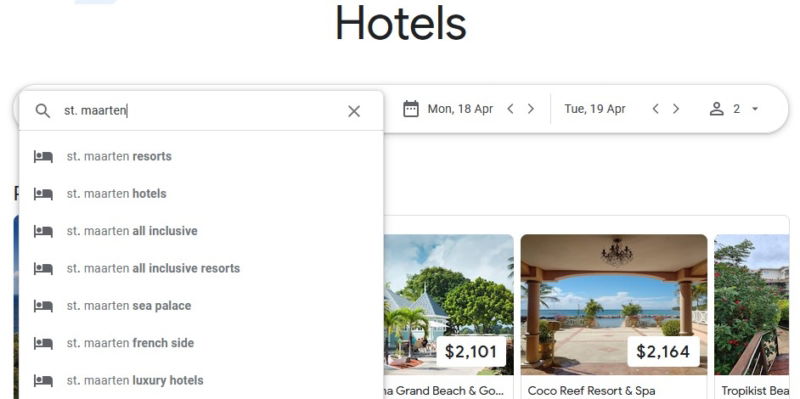
Whether it be a villa, hotel, apartment or all-inclusive, Google Flights offers a hotel search function which covers a variety of stay. While the search is not as advanced as an engine like Airbnb or VRBO, you can still filter by lodging types, number of guests, bedrooms, guest ratings, amenities and price range. The search isn’t the best when it comes to booking villas or other BnB style rentals, but there is always a good mix of hotels. I recommend mixing this and other search options if you want to find the best possible option.
Find Things To Do On Google Flights
People’s opinions vary on this topic, but why visit a new country for the first time and limit yourself to the resort? I usually try to find as many things to do in my short stays, whether it be trying new food, visiting a few sights, or just trying to get acquainted with the area that I’m staying in. Previously I used sites like Viator and TripAdvisor to find a list of things to do, but of course those lists are usually skewed towards paying for some kind of tour or entry fee. However, Google Flights’ Things To Do tab lists as many items as possible even if they are free to check out.
The upside here is that you have a wider option of things to choose from. However Google’s results only leads you to search engine results. This means that if you do find a paid tour or service you’d like to try, you still have to do a bit of searching to book your item (which is better integrated on sites like TripAdvisor). I recommend checking both to find the best of both worlds.
A quick search of Saint Martin shows up a number of interest points across the French side of the island. If I zoom in, more items are displayed in both the list and map.
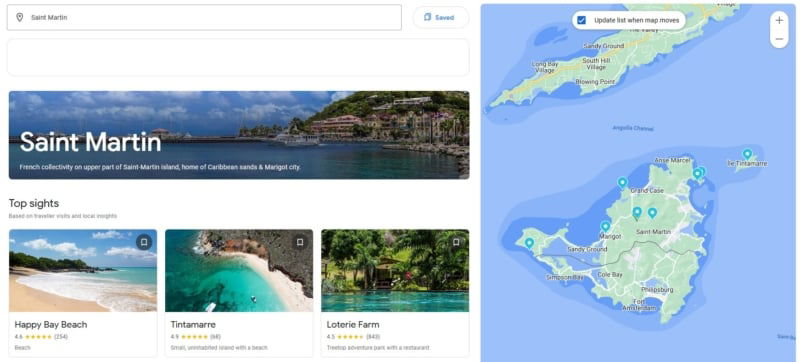
Getting Vacation Destination Ideas
So you’ve saved up a chunk of change and you’re ready for that big break, but your creative juices aren’t flowing and you can’t figure which new destination to visit.
Google Flight’s Explore section allows you to enter your departing city and travel dates, and will suggest city destinations within your range of view, whether you view the entire globe or just the west coast, or parts of Europe. The results vary depending on how far in or out you zoom. The search box does allow you to put a destination if you have somewhere in mind, but for this point, we will be assuming you’re trying to get new city ideas.
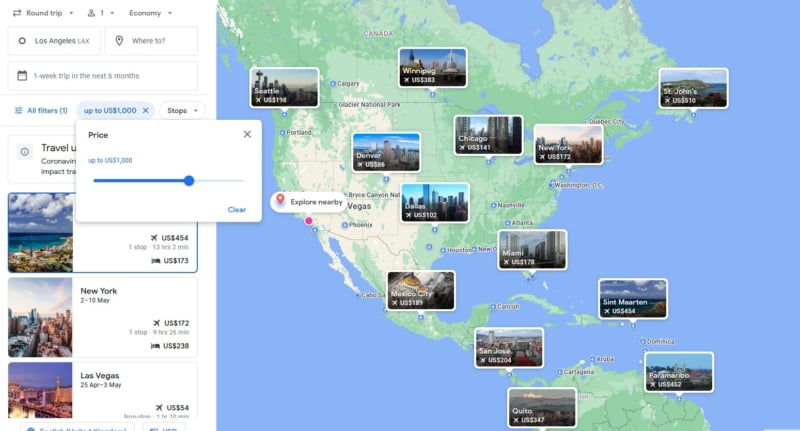
If you’re looking up an entire vacation and not just a flight, Google Flights will provide a city compilation showing a list of things to do and places to see, flights to get there, hotels and villas to stay in, and even suggest the best time of year depending on tourist traffic.
Similar to the flights search, there are filters to work with to narrow your results.
- Stops – This relates to the flight aspect, allowing you to choose whether you want a non-stop flight, or the option to limit the number of stops.
- Travel Mode – This options allows you to search for either flights alone, or an entire suggested “package” which includes results of flights, accommodations and things to do. The flight-only option can also be accessed if you do an open ended search via the Flights menu.
- Interests – Filter by categories such as beaches, museums, skiing, outdoors, and others.
- Price – Set the limit on how much you are willing to spend.
- Airlines – Like above, you can filter either by preferred carrier(s) or alliance partner groups.
- Duration – This option can be used to filter your flight time.
- Bags – Like above, the bags selection can be used so that prices reflect the inclusion of checked and/or carry-on bags if the airlines charge separately.
Caveats
Unfortunately not every single airline is listed on Google Flights. Many small brands, and even a few big names like Southwest does not appear in search results. The main reason usually stems from the fact that these airlines do not allow fares to be sold via third party engines, hence no available listings. Another noteworthy point is that Google’s deal may not always be the best deal. Sites like Skyscanner for instance encompass a wider variety of booking partners, sometimes resulting in better finds than Google. However, if you are knee-deep in the savings game, it’s always a good idea to utilize a number of tools to find the best option rather than just relying solely on one search engine.
[Featured Photo: Bradley Wint/Gate Checked]



